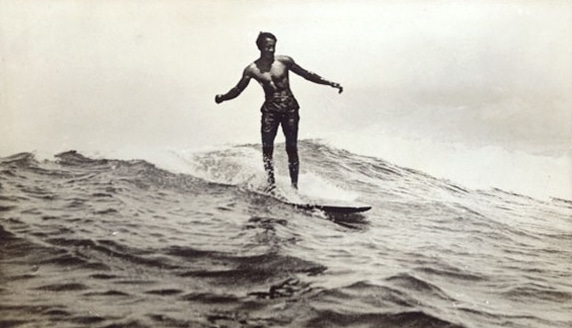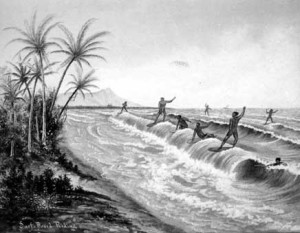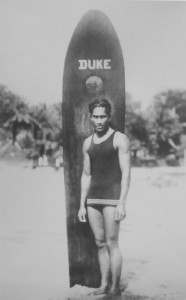
As part of your Maui surf lessons, it’s best to go over the history of surfing. Now, you might not be overly excited at the idea of a history lesson, but as with most Hawaiian activities and subjects, you'll find this is much more interesting than your typical history class.
So, let's get the ball rolling, when you’re learning to surf in Maui, it’s nice to know a little about where this awesome sport came from so you can truly take in the Aloha spirit of surfing.
Surfing’s Origins.
As far back as the 15th century there were Hawaiian chants honoring surfing and talking about competing chiefs, surfing wagers, and remarkable waves, hawaiihistory.org noted. In 1779, Lieutenant James King, who was commander of Captain James Cook’s ship Discovery after Cook’s death, wrote a description of surfboard riding by the locals at Kealakekua in Hawaii. By then, surfing was an key part of Hawaiian culture, Marcus noted, as can be seen in their early religion, society, and myths of the islands including petroglyphs of surfers carved on lava rocks. (Now that's totally awesome bro)
“The Polynesians who made it to Hawaii also brought their customs with them, including playing in the surf on paipo (belly) boards. Although Tahitians are said to have occasionally stood on their boards, the art of surfing upright on long boards was certainly perfected if not invented in Hawaii,” Ben Marcus wrote in From Polynesia, With Love: A History of Surfing From Captain Cook to the Present.
So, it’s generally believed that the Polynesians who migrated throughout the Pacific Islands from Marquesas, Fiji, and Tahiti to the Hawaii Islands were the first to surf.
The art of surfing took hold and was mastered in the Hawaiian Islands. Thus, surfing or “he’e nalu” (to ride the waves) came to be known as a Hawaiian sport.
A Sport of Royalty.
Do you feel a little Kingly as you catch a big wave? Surfing was especially popular among royalty in early Hawaiian culture as part of their “kapu” system, where “ali’i” or the ruling class had a different status from the “maka’ainana” or commoners, the Hawaiian Encyclopedia said. Chiefs used surfing to show their courage and skill to their subjects and reinforce their elevated status.
“The kings used to ride huge “olo” balsa board reserved only for them which were 18-25 ft in length, whilst the rest of the population had to ride smaller “alaia” surfboards,” the surf shop Extreme Horizon noted.

Some of Hawaii’s most famous chiefs were extolled for their surfing abilities. Nevertheless, this captivating Hawaiian sport was big among both royals and commoners with men and women of all ages enjoying the sport.
Rebirth of Surfing.
With the influx of European culture following Captain Cook’s visit to the Hawaii Islands, interest in surfing began to decrease. But in the early 20th century two renowned surfers made the sport popular once again.
Hawaiian native Duke Kahanamoku surfed Waikiki in 1905, the Hawaiian Encyclopedia said, and thus began the rebirth of Hawaiian surfing. He was one of the famous Waikiki beach boys, a group of water sports instructors and surfers. Duke set an American swimming record in the year 1911 and later set world records and won medals in four different Olympics. As the Encyclopedia noted, Duke went on to become a Hollywood movie star and was Sheriff of the City and County of Honolulu for 26 years. He is now considered a Hawaiian legend.

George Freeth was another Waikiki beach boy that brought much attention to the Hawaiian sport of surfing. In 1907, famous American writer Jack London met George and wrote a magazine article about surfing that made George a small celebrity in the U.S., Extreme Horizon noted. George then moved to California, surfing at major beaches in the state, creating more momentum and interest in the Hawaiian sport. Soon, California surfers began to crop up.
Thus, surfing had once again become a favorite pastime of those who love the ocean.
So, how are your surfing lessons coming? We hope that you now know a little more of the history behind this acclaimed Maui ocean sport and Hawaiian lifestyle, continue to practice and develop your surfing skills and come to know truly know the spirit of Aloha.